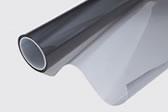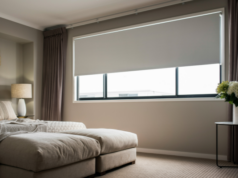
Film (also commonly known as tinting) is an effective and affordable way to keep heat out and also helps to reinforce your windows for safety.

Sometimes known as window tinting, window film consists of an ultra-thin polyester-based material with an adhesive backing that is applied to a glass pane. Window film can be a cost effective option to reduce solar heat gain or improve the safety of your existing windows.
Types of window film
There several types of window film available, each of which performs a different function. While the most common benefits of window film are detailed below, you should ask your installer what’s best for you.
| Supplied by the Window Film Association of Australia and New Zealand (WFAANZ). |
Solar films
Commonly used to reduce cooling bills, solar film contains an absorbing dye or reflective metal layer and works by absorbing or reflecting solar radiation. The result is a lowering of the overall internal temperature of your home, reducing the energy load on air conditioning units, fans and thermal controls. In most cases, window film pays for itself within a number of years as well as positively contributing to your home’s energy rating.
Additionally, window tinting can significantly reduce glare as well as cutting the amount of UV rays coming through the window by up to 99 percent. UV rays can damage furnishings, carpets and upholstery through fading.
Heat, glare and energy saving qualities vary from film to film. For example, spectrally selective window films block solar heat and transmit high levels of natural light, while low-e window films reduce heat penetration in summer, yet keep the heat indoors in winter.
Safety films
Optically clear and highly transparent, safety films allow light to pass through, while reinforcing the glass so it’s not brittle. An elastic component in the film holds the glass together in the event of breakage. The thicker the film, the stronger the glass it is applied to becomes. Safety films can also bring old glass up to current building regulations for safety glass requirements.
New varieties combining the benefits of different films are constantly being introduced. For example, solar control safety film will prevent glass from breaking into dangerous shards as well as reducing the amount of heat entering the home.
What to look for
- Different shades
- Compliance
- Energy performance
Different shades
Solar films range in darkness from almost transparent to dark grey. While darker shades may affect the amount of natural light coming into the home, newer films on the market offer high visibility and thermal performance. These almost clear, low reflective films ensure minimal change to the look of the glass while still retaining light into the room.
Compliance
Depending on your particular circumstances, many different products may be suitable. Your window film installer should be able to guide you through the Australian Building Codes Board requirements and determine the climate zone you live in, to select what level of solar protection you need.
Energy performance
In Australia, the Window Energy Rating Scheme (WERS) helps consumers accurately and confidently compare the energy performance of different window products. Many residential window films have been energy rated as part of WERS. You can check the energy performance of your window film or window system at www.wers.net/wersforfilm.
Common problems
While window films are relatively cheap to install, high performance alternatives such as low-emissitive glass are a more long-lasting and efficient way of reducing air conditioning bills. If you are installing new windows, it is worth investigating all your options first.
The performance of window film relies greatly on how well it is applied. Poorly installed film can absorb a lot of heat causing the glass to crack. For this reason it is recommended that an accredited installer is used to ensure maximum performance and reduce the chance of thermal stress.
Window films can be damaged by abrasive cleaners or harsh treatment. Scratch-resistant varieties that can withstand a fair amount of wear and tear are available to consumers but even these can be scratched if proper care isn’t taken. It is recommended that non-ammonia based solutions are used to clean windows and all tree branches close to windows are trimmed regularly.
|
Advantages
|
Disadvantages
|





